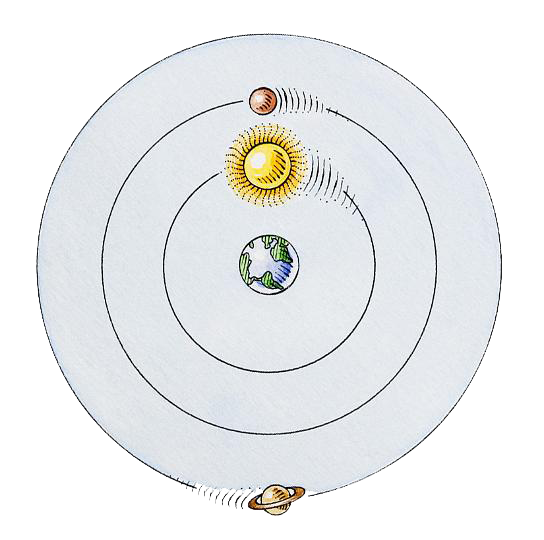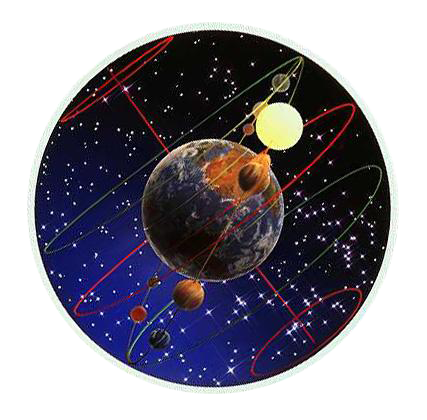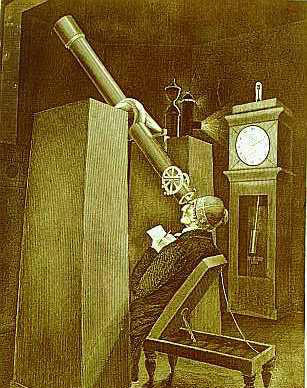History
In 350 BCE, Greek philosopher Aristotle suggested that nature abhors a vacuum, a principle that became known as the horror vacui. This concept built upon a 5th-century BCE ontological argument by the Greek philosopher Parmenides, who denied the possible existence of a void in space. Based on this idea  that a vacuum could not exist, in the West it was widely held for many centuries that space could not be empty. As late as the 17th century, the French philosopher René Descartes argued that the entirety of space must be filled.
that a vacuum could not exist, in the West it was widely held for many centuries that space could not be empty. As late as the 17th century, the French philosopher René Descartes argued that the entirety of space must be filled.
In ancient China, there were various schools of thought concerning the nature of the heavens, some of which bear a resemblance to the modern understanding. In the 2nd century, astronomer Zhang Heng became convinced that space must be infinite, extending well beyond the mechanism that supported the Sun and the stars. The surviving books of the Hsüan Yeh school said that the heavens were boundless, "empty and void of substance". Likewise, the "sun, moon, and the company of stars float in the empty space, moving or standing still".
The Italian scientist Galileo Galilei knew that air had mass and so was subject to gravity. In 1640, he demonstrated that an established force resisted the formation of a vacuum. However, it would remain for his pupil Evangelista Torricelli to create an apparatus that would produce a vacuum in 1643. This experiment resulted in the first mercury barometer and created a scientific sensation in Europe. The French mathematician Blaise Pascal reasoned that if the column of mercury was supported by air then the column ought to be shorter at higher altitude where the air pressure is lower. In 1648, his brother-in-law, Florin Périer, repeated the experiment on the Puy de Dôme mountain in central France and found that the column was shorter by three inches. This decrease in pressure was further demonstrated by carrying a half-full balloon up a mountain and watching it gradually expand, then contract upon descent.
A glass display case holds a mechanical device with a lever arm, plus two metal hemispheres attached to draw ropes. The original Magdeburg hemispheres (lower left) used to demonstrate Otto von Guericke's vacuum pump (right) In 1650, German scientist Otto von Guericke constructed the first vacuum pump: a device that would further refute the principle of horror vacui. He correctly noted that the atmosphere of the Earth surrounds the planet like a shell, with the density gradually declining with altitude. He concluded that there must be a vacuum between the Earth and the Moon.
Back in the 15th century, German theologian Nicolaus Cusanus speculated that the Universe lacked a center and a circumference. He believed that the Universe, while not infinite, could not be held as finite as it lacked any bounds within which it could be contained. These ideas led to speculations as to the infinite dimension of space by the Italian philosopher Giordano Bruno in the 16th century. He extended the Copernican heliocentric cosmology to the concept of an infinite Universe filled with a substance he called aether, which did not cause resistance to the motions of heavenly bodies. English philosopher William Gilbert arrived at a similar conclusion, arguing that the stars are visible to us only because they are surrounded by a thin aether or a void. This concept of an aether originated with ancient Greek philosophers, including Aristotle, who conceived of it as the medium through which the heavenly bodies moved.
He extended the Copernican heliocentric cosmology to the concept of an infinite Universe filled with a substance he called aether, which did not cause resistance to the motions of heavenly bodies. English philosopher William Gilbert arrived at a similar conclusion, arguing that the stars are visible to us only because they are surrounded by a thin aether or a void. This concept of an aether originated with ancient Greek philosophers, including Aristotle, who conceived of it as the medium through which the heavenly bodies moved.
The concept of a Universe filled with a luminiferous aether remained in vogue among some scientists until the early 20th century. This form of aether was viewed as the medium through which light could propagate. In 1887, the Michelson–Morley experiment tried to detect the Earth's motion through this medium by looking for changes in the speed of light depending on the direction of the planet's motion. However, the null result indicated something was wrong with the concept. The idea of the luminiferous aether was then abandoned. It was replaced by Albert Einstein's theory of special relativity, which holds that the speed of light in a vacuum is a fixed constant, independent of the observer's motion or frame of reference.
The first professional astronomer to support the concept of an infinite Universe was the Englishman Thomas Digges in 1576. But the scale of the Universe remained unknown until the first successful measurement of the distance to a nearby star in 1838 by the German astronomer Friedrich Bessel. He showed that the star 61 Cygni had a parallax of just 0.31 arcseconds (compared to the modern value of 0.287″). This corresponds to a distance of over 10 light years. The distance to the Andromeda Galaxy was determined in 1923 by American astronomer Edwin Hubble by measuring the brightness of cepheid variables in that galaxy, a new technique discovered by Henrietta Leavitt. This established that the Andromeda galaxy, and by extension all galaxies, lay well outside the Milky Way.
But the scale of the Universe remained unknown until the first successful measurement of the distance to a nearby star in 1838 by the German astronomer Friedrich Bessel. He showed that the star 61 Cygni had a parallax of just 0.31 arcseconds (compared to the modern value of 0.287″). This corresponds to a distance of over 10 light years. The distance to the Andromeda Galaxy was determined in 1923 by American astronomer Edwin Hubble by measuring the brightness of cepheid variables in that galaxy, a new technique discovered by Henrietta Leavitt. This established that the Andromeda galaxy, and by extension all galaxies, lay well outside the Milky Way.
The earliest known estimate of the temperature of outer space was by the Swiss physicist Charles É. Guillaume in 1896. Using the estimated radiation of the background stars, he concluded that space must be heated to a temperature of 5–6 K. British physicist Arthur Eddington made a similar calculation to derive a temperature of 3.18° in 1926. 1933 German physicist Erich Regener used the total measured energy of cosmic rays to estimate an intergalactic temperature of 2.8 K.
The modern concept of outer space is based on the "Big Bang" cosmology, first proposed in 1931 by the Belgian physicist Georges Lemaître. This theory holds that the observable universe originated from a very compact form that has since undergone continuous expansion. The background energy released during the initial expansion has steadily decreased in density, leading to a 1948 prediction by American physicts Ralph Alpher and Robert Herman of a temperature of 5 K for the temperature of space.
The term outer space was used in 1842 by the English poet Lady Emmeline Stuart-Wortley in her poem "The Maiden of Moscow". The expression outer space was used as an astronomical term by Alexander von Humboldt in 1845. It was later popularized in the writings of H. G. Wells in 1901. The shorter term space is actually older, first used to mean the region beyond Earth's sky in John Milton's Paradise Lost in 1667.